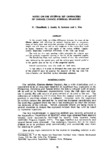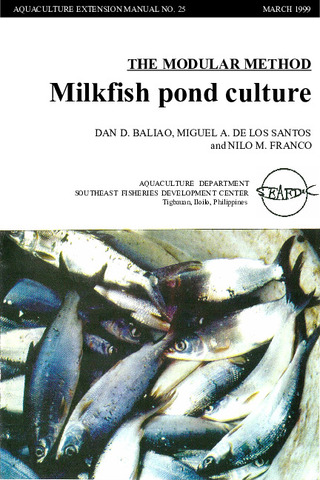Notes on the external sex characters of Chanos chanos (Forskal) spawners
- Global styles
- MLA
- Vancouver
- Elsevier - Harvard
- APA
- Help

ดู/
วันที่
1976Page views
7,578ASFA keyword
AGROVOC keyword
Taxonomic term
เมตาดาต้า
แสดงระเบียนรายการเต็ม
Share
นามธรรม
In the present study, no visible differences between the sexes of C. chanos with reference to external features such as colouration, shape of head, snout and operculum, presence of tubercles or nasal pores, length, size and shape as well as any roughness in the various fins, could be found. However, the anal region of the mature milkfish (sabalo) exhibits discernible anatomical differences in the male and female. The male has two main openings visible externally: the anterior anus and the posterior urogenital opening at the tip of the urogenital papilla. The female has three main openings instead of two: the anteriormost anus, followed by the genital pore and the urinary pore located posterior to the genital pore at the tip of the urogenital papilla. Internal examinations were also made on both sexes. In ripe sabalo, it is easier to distinguish the sexes since milk oozes out of the urogenital pore by pressing the abdomen of the ripe male fish. Gravid females are identified by their distended abdomens.
การอ้างอิง
Chaudhuri, H., Juario, J. V., Samson, R., & Tiro, L. B. (1976). Notes on the external sex characters of Chanos chanos (Forskal) spawners. Fisheries Research Journal of the Philippines , 1(2), 76-80. http://hdl.handle.net/10862/1070
Type
ArticleISSN
0115-2238คอลเลกชัน
- Journal Articles [1258]
Related items
Showing items related by title, author, creator and subject.
-
Series: Aquaculture extension manual; No. 25
The modular method: Milkfish pond culture
Baliao, Dan D.; de los Santos, Miguel A.; Franco, Nilo M. (Aquaculture Department, Southeast Asian Fisheries Development Center, 1999)The modular method of milkfish culture (Chanos chanos) described in the manual is an improvement over the traditional extensive method. The manual is intended for the use of fish farmers and aquaculturists, extensionists, ... -
Evaluation of organic and inorganic fertilizers in brackishwater milkfish ponds
Bombeo-Tuburan, Isidra; Agbayani, Renato F.; Subosa, Precilla F. (Elsevier, 1989)The study was conducted in twelve 144-m2 ponds to evaluate the effect of different organic and inorganic fertilizers on the growth, survival, gross production, and profitability of marketable milkfish. The ... -
Milkfish breeding and hatchery technology at SEAFDEC/AQD
ผู้แต่งที่ไม่รู้จัก (Aquaculture Department, Southeast Asian Fisheries Development Center, 1999)Describes the techniques already adopted by the private sector: broodstock management, broodstock diet, commercial fry production, live transport, and larval diet. A list of AQD research publications on milkfish is included.





